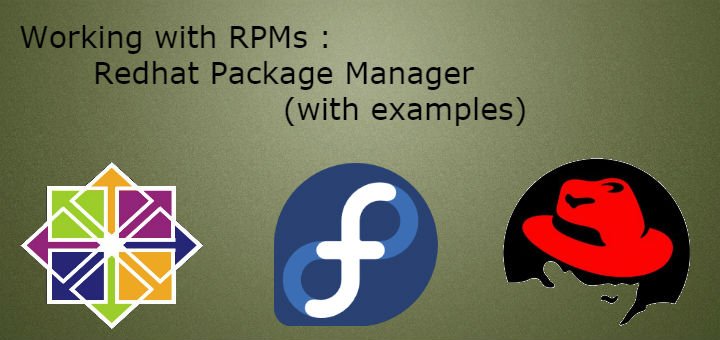RPM or Redhat Package Manager is the default package management utility for RHEL, Centos. Fedora. It allows us to install, remove & upgrade the rpm package files.
(Recommended Read: Creating a YUM repository from ISO & Online repo)
(Also Read: Some pretty useful YUM tips & tricks )
Examples of rpm:-
1- Installing a rpm package - rpm –ivh fuse-ntfs-3g-2013.1.13-2.el7.rf.x86_64.rpm

Here, -i installs a package,
-v is for verborose (additional details of what’s being done),
-h is for showing percentage completion with # markings.
2- Removing a package rpm –evh mlocate

here, -e is for erasing /uninstalling a package
3- Upgrade a rpm package rpm –Uvh fuse-ntfs-3g-2013.1.13-2.el7.rf.x86_64.rpm

Here, -U is used for upgrading the package
4- Checking dependencies before installing rpm –qpR httpd-2.4.6-2-45.el7.centos.x86_64.rpm
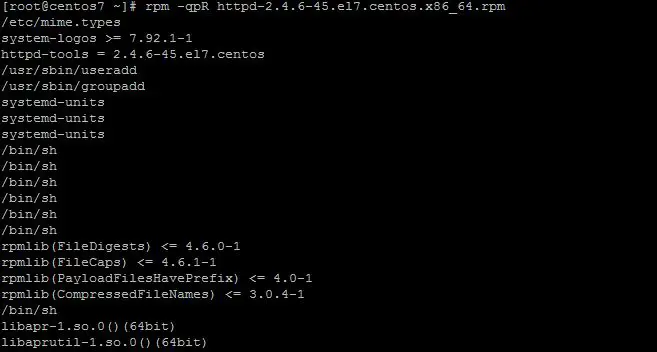
Here, -q is used to query the package,
-p is used to print the capabilities of package,
& -R for printing the capabilities on which package depends
5- Installing rpm without dependencies rpm –ivh –nodeps httpd-2.4.6-2-45.el7.centos.x86_64.rpm

6- Removing a package without dependencies rpm –evh –nodeps mlocate

7- Checking if a package is installed or not rpm –q httpd

8- List all the files for a package rpm –ql httpd
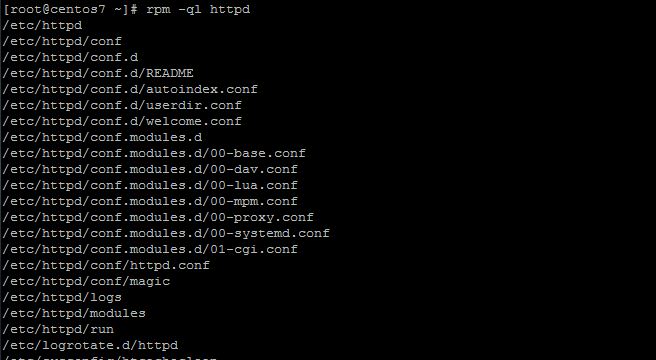
9- List all installed packages rpm –qa

10- List info about a single package rpm –qi perl
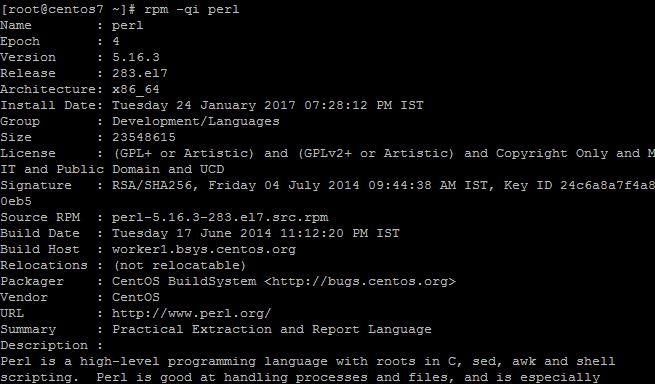
11- Checking which file belongs to which package rpm –qf /var/log/httpd

12- Verify a package rpm –Vp httpd-2.4.6-2-45.el7.centos.x86_64.rpm

13- Verify all packages rpm -Va
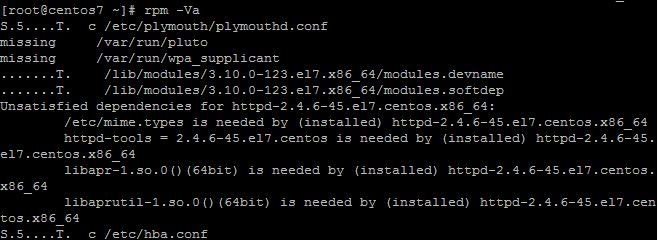
14- Checking signature of a rpm package rpm –checksign wine-20031016-1.i386.rpm
These were examples of how we can use rpm command effectively. Although rpm (Redhat Package Manager) is complete package manager in itself, it has one big advantage to it i.e. dependencies for the package are to be resolved manually. Resolving dependencies can be very difficult at times, especially when dependencies have dependencies of their own & you might end up installing 10-15 packages at times (it happened, real story).
But this problem of dependency resolution has been addressed with YUM & DNF package managements which will be discussed in separate tutorials (available soon).
This concludes our tutorial on RPM package management utility. If having any doubts/questions, please reach out & I will be happy to address them.
If you think we have helped you or just want to support us, please consider these :-
Connect to us: Facebook | Twitter | Google Plus
Donate us some of you hard earned money: [paypal-donation]
Linux TechLab is thankful for your continued support.
